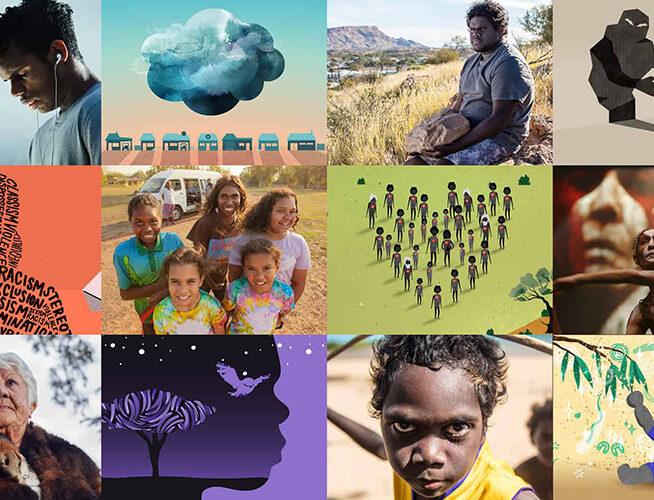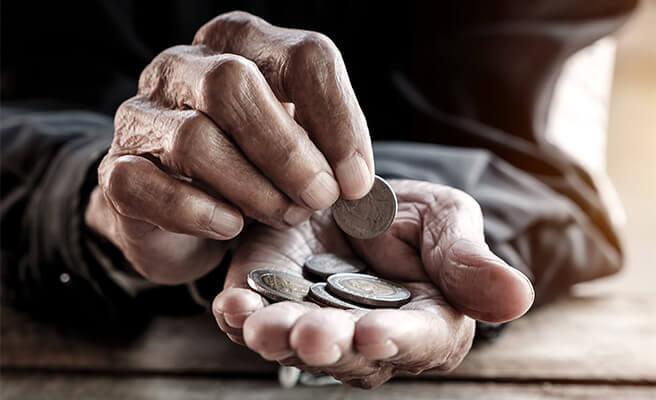December 8, 2021
By First Nations Foundation
Carbon Creative: connected through stories
By First Nations Foundation
December 8, 2021
Share this article


Carbon Creative is a social impact creative agency that works to create game-changing solutions for some of society’s biggest issues. Fifteen years ago, Carbon Creative founder and managing director, proud Birri Gubba man Wayne Denning, saw an opportunity to make a real difference to the lives of his fellow Indigenous Australians through storytelling and impactful ideas.
From the mainstream to the marginalised, Wayne’s vision has evolved to empower and motivate behaviour change en masse on issues such as Indigenous rights and representation, voter participation, and end-of-life care. First Nations foundation spoke to Wayne about Carbon Creative’s work on Indigenous projects, and what moves the needle in the current media landscape.
Tell us about your earlier work in Native Title and Land Rights, and what did you learn that inspired you to launch Carbon Creative?
I went into Native Title and Land Rights because it was such a dynamic time for Aboriginal and Torres Strait Islander Australia. The opportunity to express our rights and interests on a national stage—and to have our voices listened to—really excited me. Ultimately, however, this was partially impeded by how the mainstream media persisted in portraying us as being in deficit.
Carbon Creative was born out of this frustration and my desire to present a positive voice from First Nations Australia. We have been thought leaders and innovators for the past 60,000 years, and that’s not going to stop any time soon.
How can storytelling be used to inspire action and real-world solutions?
Authentic storytelling can provide a sense of connectedness and relatability that can inspire action and facilitate behaviour change. At Carbon, we often provide a genuine voice from the life experiences of real people, not actors, to share a message in the campaigns we work on.
What is your process of understanding the sensitivities and nuances within certain projects? – and why is it necessary?
Reality is everything. That’s why it’s so important that we understand the perspective of the audiences we are trying to engage with and reflect their real-life experiences. Our work is often at the “deep end of the pool” where a lack of appreciation of the holistic experiences impacting the lives of people can be a significant impediment.
What do organisations or brands need to be mindful of when communicating with First Nations communities? – in terms of design, language etc.
Brands and organisations need to be authentic and try to put themselves in the real-life position of First Nations experiences today and into the future.
What doesn’t work?
Smoke and mirrors definitely don’t work!
What Indigenous issues are you most passionate about, and what are you doing to make real change?
I am particularly passionate about Truth Telling and amplifying First Nations across all aspects of society. We have an un-reconciled history in Australia and a society built on a lie. Until all Australians can understand their Truth, we’ll be unable to move forward in achieving a just and equitable society. On a personal level, I try to make real change by calling out dishonesty or ambiguity—and calling for Truth—whenever possible.
What is your process for landing these sorts of projects?
We land these sorts of projects because we are considered leaders and go ‘beyond the campaign’. This is not work to us, but what we truly believe in and stand for. And our clients get this.
Share this article


Related articles
Media release
May 26, 2025

Media release
May 26, 2025
First Nations Foundation Welcomes Leah Bennett as Managing Director
Read more
Media release
August 6, 2024

Media release
August 6, 2024
First Nations Foundation partners with Morningstar to launch investment training for Aboriginal and Torres Strait Islander people
Read more
Media release
May 31, 2024

Media release
May 31, 2024
FNF calls on government and financial institutions to do more for economic reconciliation
Read more